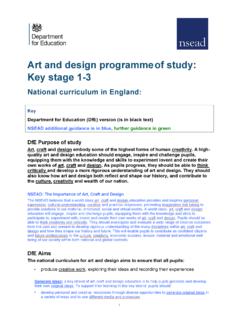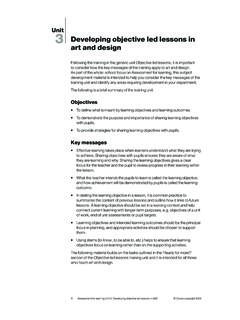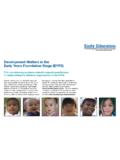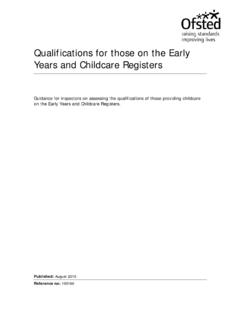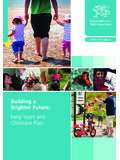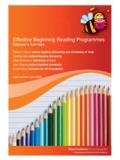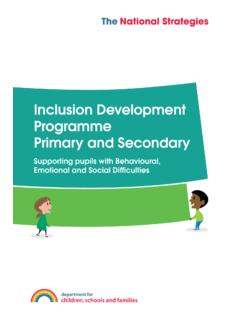Transcription of The National Society for Education in Art and Design ...
1 1. The National Society for Education in Art and Design survey Report 2015-16. In the last five years how has government policy impacted on art, craft and Design Education ? Curriculum provision in art and Design The value given to art and Design in schools or colleges Professional development opportunities in art and Design Wellbeing and workload of art and Design teachers The National Society for Education in Art and Design survey Report 2015-16. Contents President's foreword 03. Acknowledgements 04. 1. Key survey report findings 05. 2. Introduction 08. 3. Methodology 08. 4. Participation 08. 5. survey and report structure 10. 6. Findings 11. A. Curriculum provision in art and Design 11.
2 B. The value given to art and Design in schools and colleges 27. C. Professional development opportunities in art and Design 32. D. Wellbeing and workload of art and Design teachers 36. 7. Recommendations 41. 8. Endnotes 45. 2. 3. President's foreword Many parents believe that the curriculum is an entitlement and that their children should have a choice to study subjects to examination level where they show exceptional abilities and commitment. Until recently such an entitlement has meant that children and young people could pursue their interests in Education , leading to careers in the creative, media and Design industries. These same industries are the envy of the world and continue to be one of the most successful sectors in the UK, outperforming most others.
3 This is why this survey report comes at such a crucial time for art, craft and Design Education . It is a health check for our subject, with findings that indicate a context of increasing misunderstanding and less regard for art, craft and Design Education , the arts and technology. Without this survey , there would be little evidence of the impact of government policy and the restructured curriculum, which seeks to address the very real problem of standards in English and mathematics and the qualification profile at 16 plus. However important it is to address such problems, it is never appropriate to do so by limiting curriculum breadth or subjects which contribute towards the personal growth and aspirations of children and young people, as well as their future career choices.
4 This survey provides evidence of the growing impact of these changes, foisted on schools through a culture of subject devaluation by policies which imply that even successful study and high standards of achievement in the arts will limit career and university choices. For those who would benefit from the transferable skills accessed through the arts, or for those who aspire to a successful, rewarding and world-class career in one of our creative and media industries, this report identifies how policy decisions are beginning to disadvantage some children and young people. Furthermore, the impact of policies on the dedicated teachers who deliver our subject is also carefully evidenced in this report.
5 In the wake of the Department for Education 's Government Response to the Workload Challenge, 20151, the NSEAD's key survey findings show that the wellbeing and workload of art and Design teachers should be urgently considered and addressed. There are important messages here for parents and carers, teachers, senior leaders and school governors, as well as Ofsted inspectors, politicians and leaders of industry. I urge you to read this survey and recognise the descriptions of circumstances and damage that has already been done within our schools, and to the aspirations of children and young people who want to develop their creative skills to enrich our culture, contributing to future prosperity and industry.
6 Ged Gast President, NSEAD. 1 Government response to the Workload Challenge, February 2015, Department for Education pdf Acknowledgements NSEAD wishes to thank Jenny Evans, Dr Emese Hall, Rachel Payne, members of NSEAD's Finance &. General Purposes Committee, NSEAD's Council, the Publications Board, the Professional Development Board, and the Curriculum Board, all of whom supported the Design , analysis and/or review of the questionnaire and survey report. NSEAD would also like to thank all the teachers and lecturers who completed the questionnaire. 4. 5. 1. Key survey Report Findings In the last five years how has government policy impacted on art, craft and Design Education ?
7 A. Curriculum provision in art and Design Learning opportunities in art, craft and Design across all key stages have reduced significantly. At least a third and up to 44% of teacher responses over all key stages indicate that time allocated for art and Design had decreased in the last five years. National curriculum tests at key stage 2 have negatively impacted on the time allocated for art and Design in primary schools. The reduction in time allocated for art and Design in the two terms before key stage 2 tests is greater in state schools than in independent schools. 89% of primary teachers in state schools reported that during the two terms before key stage 2 National curriculum tests, the time allocated for art and Design had decreased.
8 The effects of National key stage 2 testing are notably worse in state schools than in independent schools; 54% of independent school respondents reported a decrease. Over half of all secondary art and Design teachers report a fall in standards achieved when pupils joined their schools in year 7. Over half (53%) of secondary art and Design teachers reported that on entry to year 7 there had been a fall in levels of art and Design attainment reached by pupils joining their school. Provision for art and Design is increasingly influenced by school type/sector. At key stage 3 and 4. academy sponsors have seen the biggest reduction in time allocated for the subject.
9 More art and Design teachers in academy sponsors reported a reduction in the time allocated for art and Design at key stage 3 (55%) and key stage 4 (42%) than in any other sector. In schools where there has been a reduction in time allocated for art and Design at key stage 4, performance measures have reduced opportunities for students to study art and Design . In state schools where respondents identified that there had been a reduction of time allocated for art and Design , 93% of these teachers agreed/strongly agreed that the English Baccalaureate (EBacc) had reduced opportunities for students to select the subject. Post 16 course closures have reduced the range of art and Design courses offered for some young people.
10 Over a third (34%) of art and Design teachers and lecturers in schools or colleges said that in the last five years, art and Design post 16 courses have closed in their institutions. B. The value given to art and Design in schools or colleges The value given to art and Design has impacted on the choice and provision of art and Design qualifications offered for both higher and lower ability students. Teachers across all sectors indicated that their schools were more likely to enable lower ability students to take art and Design qualifications than higher ability students. Respondents teaching in free schools were the most likely (93%) to agree/strongly agree that their schools enable lower ability students to study art and Design .


